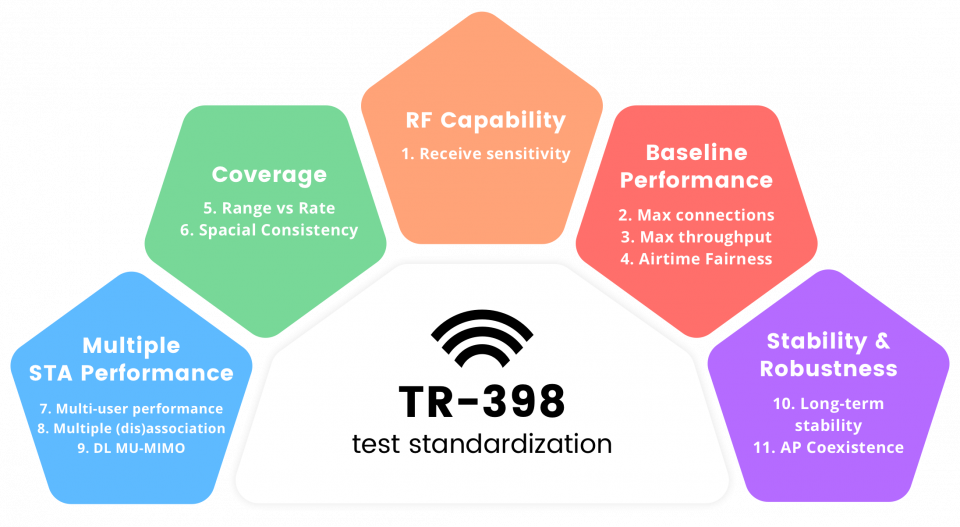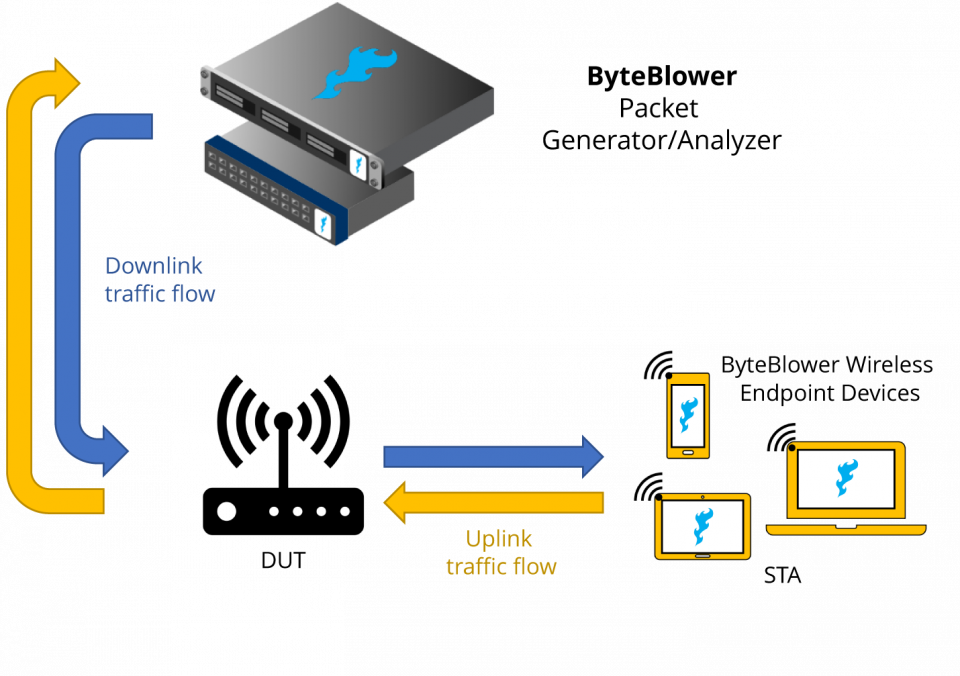Testing Wi-Fi with TR-398 standards

With this introduction to TR-398, we’re kicking off a series of blog posts about standardised Wi-Fi testing together with our ByteBlower solution. In this first post, we explain the general concept of TR-398, and why it’s so important to the industry. Over the next few months, we’ll dive into more detailed approaches and explore how ByteBlower makes testing simpler and easier than ever.
What exactly is TR-398?
TR-398 is a test standardization document by The Broadband Forum. It describes a set of 11 test scenarios which cover 5 key Wi-Fi performance aspects ranging from throughput, coverage, stability, interoperability, connectivity, etc., between access points (such as home gateways) and one or more Wi-Fi stations (PCs, smartphones, tablets, etc.).
So, why is TR-398 important for the wireless network industry? Up till now, there was no clear standardized set of test cases which enabled the industry to compare wireless access points with each other. While standards allow vendors, internet service providers and customers to gain a much better overview on the available access points on the market.

Intro to test scenarios with target parameters and PASS/FAIL criteria
Each of the 11 test cases included in TR-398 comes with a test plan that describes setup information, equipment configuration requirements and test procedures with target results that enable PASS/FAIL criteria. These standardized tests enable businesses operating in in-home Wi-Fi networks to compare performance results between different Wi-Fi products.
Each test case is defined as a scenario running between a Device Under Test (DUT) and one or more Wi-Fi stations (STA). Every scenario uses predefined ethernet traffic flows generated by and analysed via a packet generator/analyser. Flows are defined as either TCP or UDP traffic with a specific set of parameters (number of parallel flows, file size, TCP window size, etc.).
Finally, all throughput measurements are taken on layer 4 of these TCP or UDP traffic streams. For each of the test cases, a number of PASS/FAIL criteria are set for both Wi-Fi 4 (802.11n) as well as Wi-Fi 5 (802.11ac).
Applying TR-398 with the ByteBlower Wireless Endpoint
As TR-398 describes how and what to test within a Wi-Fi network, ByteBlower presents a perfect solution for easy implementation and execution of these test cases. As a packet generator and analyser, ByteBlower can create all necessary TCP and UDP flows needed to perform each specific test case.

Even more, with the ByteBlower Wireless Endpoint solution, we can make any wireless station (smartphone, tablet, PC, etc.) act like an extension of our packet generator/analyser. This enables the tester to easily create both uplink and downlink traffic flows as specified in each test case scenario.
As mentioned, TR-398 has target results for each test case, which enables the device tester to set PASS/FAIL criteria. For most of the test cases, this comes down to checking the average throughput in each of the scenarios. After setting up and running a scenario with ByteBlower, the user receives a report of the test case that shows how much throughput was achieved on average during a test. With some post processing, the report can easily be used to create the PASS/FAIL criteria as set by the TR-398 metrics.
Stay tuned! This is just the first blog post in our Wi-Fi testing series. In the following posts, we’ll dive into more detail about how ByteBlower can be used to set up and execute specific test scenarios. In the meantime, why not sign up for our newsletter for the latest insights into the wireless world?
Subscribe to our newsletter!
























